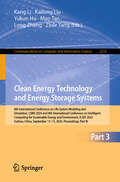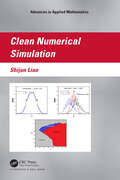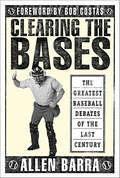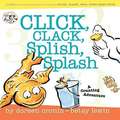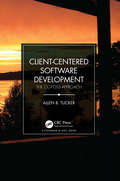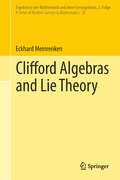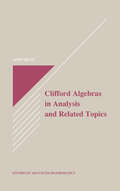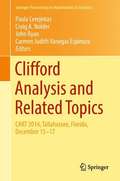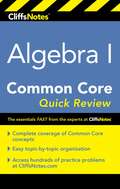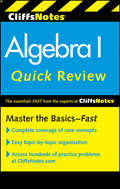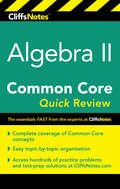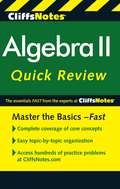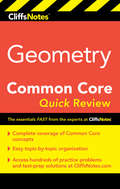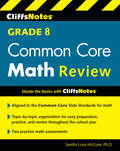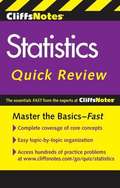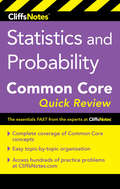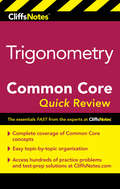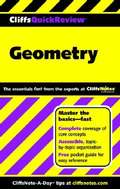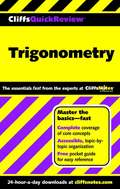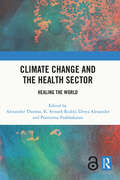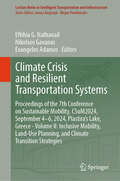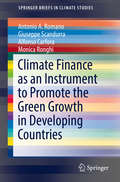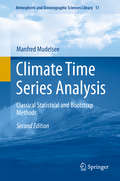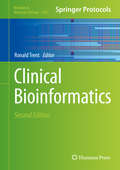- Table View
- List View
Clean Energy Technology and Energy Storage Systems: 8th International Conference on Life System Modeling and Simulation, LSMS 2024 and 8th International Conference on Intelligent Computing for Sustainable Energy and Environment, ICSEE 2024, Suzhou, China, September 13–15, 2024, Proceedings, Part III (Communications in Computer and Information Science #2218)
by Kang Li Zhile Yang Kailong Liu Long Zhang Yukun Hu Mao TanThe five-volume set constitutes the thoroughly refereed proceedings of the 8th International Conference on Life System Modeling and Simulation, LSMS 2024, and of the 8th International Conference on Intelligent Computing for Sustainable Energy and Environment, ICSEE 2024, which were held during September 13-15, in Suzhou, China. The 29 papers presented were carefully reviewed and selected from over 496 submissions. The LSMS and ICSEE international conference series aim to bring together international researchers and practitioners in the fields of advanced methods for life system modeling and simulation, as well as advanced intelligent computing theory, methodologies, and engineering applications in achieving net zero across all sectors to tackle the global climate change challenge.
Clean Numerical Simulation (Advances in Applied Mathematics)
by Shijun LiaoThis book describes the basic principles of Clean Numerical Simulation (CNS) proposed by the author in 2009, as well as several of its applications. Unlike conventional algorithms, CNS gives in a sufficiently long interval of time a convergent chaotic trajectory whose numerical noise is much lower than the true physical solution, so that one can gain accurately. Thus, CNS provides for the first time an ability to check statistics stability of chaos, leading to a completely new concept of "ultra-chaos," which has both trajectory instability and statistics instability, and thus is of a higher disorder. Notably, it is impossible to repeat experimental results of ultra-chaos even in the statistical sense. However, the reproducibility of physical experiments forms a cornerstone for modern science. Thus, ultra-chaos reveals an incompleteness of the modern science paradigm. In addition, it also reveals statistics stability as a precondition for use of conventional algorithms, including direct numerical simulation (DNS). In Clean Numerical Simulation, several conjectures and open problems are proposed, including a modified fourth Clay millennium problem. Indeed, CNS opens the door for us to enter the "clean" numerical world of chaos and turbulence.
Clearing the Bases: The Greatest Baseball Debates of the Last Century
by Allen BarraSports expert Allen Barra's Clearing the Bases takes you to the heart of baseball's ultimate question in this, the ultimate baseball debate book, one guaranteed to spark thousands of heated arguments and supply the fuel for thousands more.Who was better, Mickey Mantle or Willie Mays? Who was the best right-hander of the '60s, Bob Gibson or Juan Marichal? Who is the greatest starting pitcher of all time? At his peak, who was more valuable, Joe DiMaggio or Ted Williams? If Lefty Grove, Sandy Koufax, and Roger Clemens had pitched at the same time against the same hitters, who would have won the most games? If Jackie Robinson had been white, would he be deserving of the Hall of Fame? Is Pete Rose overrated? Has Tim Raines been underrated? Who is the best hitter of the game today-- Barry Bonds, Alex Rodriguez, Ken Griffey, Jr.? Is today's pitching really that bad? Why can't modern pitchers go nine innings? Which are more valuable--good starters or good relievers? How important is the stolen base? What are the myths that still surround Babe Ruth? What was the most talented baseball team of the twentieth century? Which twentieth-century championship team has been most slighted by baseball historians? What has been the real impact of black and Latin talent on Major League Baseball? Is baseball more competitive now than it was one hundred years ago? Or fifty? Or twenty-five? Who was the greatest all-around player of the last century? Find the answers here.Clearing the Bases is the first book to tackle these and many other of baseball's most intriguing questions, plus it offers hard, sensible answers--answers based on exhaustive research and analysis. Sports journalist Allen Barra, whose weekly sports column, "By the Numbers," has earned him millions of readers in The Wall Street Journal and whose outspoken opinions on Salon.com are discussed regularly on National Public Radio, takes on baseball's toughest arguments. Using stats and methods he developed during his ongoing tenure at The Wall Street Journal, Barra takes you to the heart of baseball's ultimate question, Who's the Best?, in this, the ultimate baseball debate book.Regardless of what stand you take in these debates, you'll never think about baseball's greatest stars in the same way again.
Click, Clack, Splish, Splash: A Counting Adventure (A Click Clack Book)
by Doreen Cronin Betsy Lewin<p>Duck is about to trick poor Farmer Brown once again. While the farmer is sleeping the afternoon away, Duck and the other animals are planning a most unusual fishing trip. Sneaking past Farmer Brown is going to be as easy as 1, 2, 3! <p>This numerical adventure for the very youngest Duck fans brings counting books to a whole new level -- click, clack, splish, splash!</p>
Client-Centered Software Development: The CO-FOSS Approach
by Allen B. TuckerClient-Centered Software Development: The CO-FOSS Approach introduces a method to creating a customized software product for a single client, either from scratch or by reusing open source components. The clients are typically non-profit humanitarian, educational, or public service organizations. This approach has been used in undergraduate courses where students learn the principles of software development while implementing a real-world software product. This book provides instructors, students, clients, and professional software developers with detailed guidance for developing a new CO-FOSS product from conceptualization to completion. Features Provides instructors, students, clients, and professional software developers with a roadmap for the development of a new CO-FOSS product from conceptualization to completion Motivates students with real-world projects and community service experiences Teaches all elements of the software process, including requirements gathering, design, collaboration, coding, testing, client communication, refactoring, and writing developer and user documentation Uses source code that can be reused and refitted to suit the needs of future projects, since each CO-FOSS product is free and open source software Provides links to a rich variety of resources for instructors and students to freely use in their own courses that develop new CO-FOSS products for other non-profits.
Clifford Algebras and Lie Theory (Ergebnisse Der Mathematik Und Ihrer Grenzgebiete, 3 Folge/a Series Of Modern Surveys In Mathematics Ser. #58)
by Eckhard MeinrenkenThis monograph provides an introduction to the theory of Clifford algebras, with an emphasis on its connections with the theory of Lie groups and Lie algebras. The book starts with a detailed presentation of the main results on symmetric bilinear forms and Clifford algebras. It develops the spin groups and the spin representation, culminating in Cartan's famous triality automorphism for the group Spin(8). The discussion of enveloping algebras includes a presentation of Petracci's proof of the Poincaré-Birkhoff-Witt theorem. This is followed by discussions of Weil algebras, Chern--Weil theory, the quantum Weil algebra, and the cubic Dirac operator. The applications to Lie theory include Duflo's theorem for the case of quadratic Lie algebras, multiplets of representations, and Dirac induction. The last part of the book is an account of Kostant's structure theory of the Clifford algebra over a semisimple Lie algebra. It describes his "Clifford algebra analogue" of the Hopf-Koszul-Samelson theorem, and explains his fascinating conjecture relating the Harish-Chandra projection for Clifford algebras to the principal sl(2) subalgebra. Aside from these beautiful applications, the book will serve as a convenient and up-to-date reference for background material from Clifford theory, relevant for students and researchers in mathematics and physics.
Clifford Algebras in Analysis and Related Topics (Studies in Advanced Mathematics #21)
by John RyanThis new book contains the most up-to-date and focused description of the applications of Clifford algebras in analysis, particularly classical harmonic analysis. It is the first single volume devoted to applications of Clifford analysis to other aspects of analysis.All chapters are written by world authorities in the area. Of particular interest is the contribution of Professor Alan McIntosh. He gives a detailed account of the links between Clifford algebras, monogenic and harmonic functions and the correspondence between monogenic functions and holomorphic functions of several complex variables under Fourier transforms. He describes the correspondence between algebras of singular integrals on Lipschitz surfaces and functional calculi of Dirac operators on these surfaces. He also discusses links with boundary value problems over Lipschitz domains.Other specific topics include Hardy spaces and compensated compactness in Euclidean space; applications to acoustic scattering and Galerkin estimates; scattering theory for orthogonal wavelets; applications of the conformal group and Vahalen matrices; Newmann type problems for the Dirac operator; plus much, much more!Clifford Algebras in Analysis and Related Topics also contains the most comprehensive section on open problems available. The book presents the most detailed link between Clifford analysis and classical harmonic analysis. It is a refreshing break from the many expensive and lengthy volumes currently found on the subject.
Clifford Analysis and Related Topics: In Honor Of Paul A. M. Dirac, Cart 2014, Tallahassee, Florida, December 15-17 (Springer Proceedings in Mathematics & Statistics #260)
by John Ryan Paula Cerejeiras Craig A. Nolder Carmen Judith Vanegas EspinozaThis book, intended to commemorate the work of Paul Dirac, highlights new developments in the main directions of Clifford analysis. Just as complex analysis is based on the algebra of the complex numbers, Clifford analysis is based on the geometric Clifford algebras. Many methods and theorems from complex analysis generalize to higher dimensions in various ways. However, many new features emerge in the process, and much of this work is still in its infancy. Some of the leading mathematicians working in this field have contributed to this book in conjunction with “Clifford Analysis and Related Topics: a conference in honor of Paul A.M. Dirac,” which was held at Florida State University, Tallahassee, on December 15-17, 2014. The content reflects talks given at the conference, as well as contributions from mathematicians who were invited but were unable to attend. Hence much of the mathematics presented here is not only highly topical, but also cannot be found elsewhere in print. Given its scope, the book will be of interest to mathematicians and physicists working in these areas, as well as students seeking to catch up on the latest developments.
CliffsNotes Algebra I Common Core Quick Review
by Kimberly GoresA quick in, quick out review of Algebra I Common Core math Relevant to high school students enrolled in their Algebra I class in those states adhering to the Common Core math standards, this quick review provides targeted chapter-level reviews of topics aligned to the Algebra I Common Core math standards, with practice problems throughout each review chapter and chapter-end quizzes. This quick review is supplemented with 300+ multiple-choice questions available on CliffsNotes.com.
CliffsNotes Algebra I Quick Review, 2nd Edition
by Jerry BobrowInside the Book:Preliminaries and Basic OperationsSigned Numbers, Frac-tions, and PercentsTerminology, Sets, and ExpressionsEquations, Ratios, and ProportionsEquations with Two Vari-ablesMonomials, Polynomials, and FactoringAlgebraic FractionsInequalities, Graphing, and Absolute ValueCoordinate GeometryFunctions and VariationsRoots and RadicalsQuadratic EquationsWord ProblemsReview QuestionsResource CenterGlossaryWhy CliffsNotes?Go with the name you know and trust...Get the information you need--fast!CliffsNotes Quick Review guides give you a clear, concise, easy-to-use review of the basics. Introducing each topic, defining key terms, and carefully walking you through sample problems, this guide helps you grasp and understand the important concepts needed to succeed.Master the Basics-FastComplete coverage of core conceptsEasy topic-by-topic organizationAccess hundreds of practice problems at CliffsNotes.com
CliffsNotes Algebra II Common Core Quick Review
by Wendy Taub-HoglundA quick in, quick out review of Algebra II Common Core math Relevant to high school students enrolled in their Algebra II class in those states adhering to the Common Core math standards, this quick review provides targeted chapter-level reviews of topics aligned to the Algebra II Common Core math standards, with practice problems throughout each review chapter and chapter-end quizzes. This quick review is supplemented with 300+ multiple-choice questions available on CliffsNotes.com.
CliffsNotes Algebra II Quick Review, 2nd Edition
by Edward Kohn David A HerzogInside the book: Linear Sentences in One Variable Segments, Lines, and Inequalities Linear Sentences in Two Variables Linear Equations in Three Variables Polynomial Arithmetic Factoring Polynomials Rational Expressions Relations and Functions Polynomial Functions Radicals and Complex Numbers Quadratics in One Variable Conic Sections Quadratic Systems Exponential and Logarithmic Functions Sequences and Series Additional Topics Word Problems Review Questions Resource Center Glossary
CliffsNotes Geometry Common Core Quick Review
by M. Sunil KoswattaA quick in, quick out review of Geometry Common Core math Relevant to high school students enrolled in their Geometry class in those states adhering to the Common Core math standards, this quick review provides targeted chapter-level reviews of topics aligned to the Geometry Common Core math standards. The lessons are reinforced with practice problems throughout each chapter as well as chapter-end quizzes. This quick review is supplemented with 300+ multiple-choice questions available on CliffsNotes.com.
CliffsNotes Grade 6 Common Core Math Review
by Sandra Luna MccuneNearly half of adults, including parents of middle-school students, have never heard of the Common Core State Standards, let alone have a working knowledge of what exactly their children face when it comes to middle-school math. Even teachers acknowledge struggling with how best to teach their students these math standards.CliffsNotes comes to the rescue with this Grade 6 Common Core Math Review. Aligned to the state standards, this book provides essential coverage of the Grade 6 CCSS math that's challenging middle-school students, teachers, and parents alike.The material covers all of the math standards that comprise Grade 6 CCSS math: * Ratios and proportional relationships * The number system * Geometry * Expressions and equations * Statistics and probabilityTwo practice tests round out the book, plus every review chapter includes example problems.
CliffsNotes Statistics Quick Review, 2nd Edition
by Scott Adams David H Voelker Peter Z OrtonInside the Book: Graphic displays Numerical measures Probability Sampling Principles of testing Univariate inferential tests Bivariate relationships Review questions Resource center Glossary Common mistakes Tables Why CliffsNotes? Go with the name you know and trust Get the information you need-fast! CliffsNotes Quick Review guides give you a clear, concise, easy-to-use review of the basics. Introducing each topic, defining key terms, and carefully walking you through sample problems, this guide helps you grasp and understand the important concepts needed to succeed. Access 500 additional practice questions at www.cliffsnotes.com/go/quiz/statistics Master the Basics-Fast Complete coverage of core concepts Easy topic-by-topic organization Access hundreds of practice problems at www.cliffsnotes.com/go/quiz/statistics
CliffsNotes Statistics and Probability Common Core Quick Review
by Malihe AlikhaniA quick in, quick out review of Statistics and Probability Common Core math? Relevant to high school students needing to review the Statistics and Probability component of the Common Core math standards, this quick review provides targeted chapter-level reviews of topics aligned to the Statistics and Probability Common Core math standards, with practice problems throughout each review chapter and chapter-end quizzes. This quick review is supplemented with 300+ multiple-choice questions available on CliffsNotes.com.
CliffsNotes Trigonometry Common Core Quick Review
by M. Sunil KoswattaA quick in, quick out review of Trigonometry Common Core math Relevant to high school students enrolled in their Trigonometry class in states adhering to the Common Core math standards, this quick review provides targeted chapter-level reviews of topics aligned to the Trigonometry Common Core math standards. The lessons are reinforced with practice problems throughout each chapter as well as chapter-end quizzes.This quick review is supplemented with 300+ multiple-choice questions available on CliffsNotes.com.
CliffsQuickReview Geometry
by Edward KohnCliffsQuickReview course guides cover the essentials of your toughest classes. Get a firm grip on core concepts and key material, and test your newfound knowledge with review questions.From planes, points, and postulates to squares, spheres, and slopes -- and everything in between -- CliffsQuickReview Geometry can help you make sense of it all. This guide introduces each topic, defines key terms, and walks you through each sample problem step-by-step. Begin with a review of fundamental ideas such as theorems, angles, and intersecting lines. In no time, you'll be ready to work on other concepts such asTriangles and polygons: Classifying and identifying; features and properties; the Triangle Inequality Theorem; the Midpoint Theorem; and morePerimeter and area: Parallelograms, trapezoids, regular polygons, circlesSimilarity: Ratio and proportion; properties of proportions; similar trianglesRight trianglesCircles: Central angles and arcs; inscribed angles; chords, secants, tangents; arc length, sectorsGeometric solids and coordinate geometryCliffsQuickReview Geometry acts as a supplement to your textbook and to classroom lectures. Use this reference in any way that fits your personal style for study and review -- you decide what works best with your needs. Here are just a few ways you can search for topics:Use the free Pocket Guide full of essential informationGet a glimpse of what you'll gain from a chapter by reading through the Chapter Check-In at the beginning of each chapterUse the Chapter Checkout at the end of each chapter to gauge your grasp of the important information you need to knowTest your knowledge more completely in the CQR Review and look for additional sources of information in the CQR Resource CenterUse the glossary to find key terms fast.With titles available for all the most popular high school and college courses, CliffsQuickReview guides are a comprehensive resource that can help you get the best possible grades.
CliffsQuickReview Precalculus
by W. Michael KelleyCliffsQuickReview course guides cover the essentials of your toughest classes. You're sure to get a firm grip on core concepts and key material and be ready for the test with this guide at your side.Whether you're new to functions, analytic geometry, and matrices or just brushing up on those topics, CliffsQuickReview Precalculus can help. This guide introduces each topic, defines key terms, and walks you through each sample problem step-by-step. In no time, you'll be ready to tackle other concepts in this book such asArithmetic and algebraic skillsFunctions and their graphsPolynomials, including binomial expansionRight and oblique angle trigonometryEquations and graphs of conic sectionsMatrices and their application to systems of equationsCliffsQuickReview Precalculus acts as a supplement to your textbook and to classroom lectures. Use this reference in any way that fits your personal style for study and review -- you decide what works best with your needs. You can either read the book from cover to cover or just look for the information you want and put it back on the shelf for later. What's more, you canUse the free Pocket Guide full of essential informationGet a glimpse of what you'll gain from a chapter by reading through the Chapter Check-In at the beginning of each chapterUse the Chapter Checkout at the end of each chapter to gauge your grasp of the important information you need to knowTest your knowledge more completely in the CQR Review and look for additional sources of information in the CQR Resource CenterUse the glossary to find key terms fast.With titles available for all the most popular high school and college courses, CliffsQuickReview guides are a comprehensive resource that can help you get the best possible grades.
CliffsQuickReview Trigonometry
by David A KayCliffsQuickReview course guides cover the essentials of your toughest classes. Get a firm grip on core concepts and key material, and test your newfound knowledge with review questions.CliffsQuickReview Trigonometry provides you with all you need to know to understand the basic concepts of trigonometry -- whether you need a supplement to your textbook and classes or an at-a-glance reference. Trigonometry isn't just measuring angles; it has many applications in the real world, such as in navigation, surveying, construction, and many other branches of science, including mathematics and physics. As you work your way through this review, you'll be ready to tackle such concepts asTrigonometric functions, such as sines and cosinesGraphs and trigonometric identitiesVectors, polar coordinates, and complex numbersInverse functions and equationsYou can use CliffsQuickReview Trigonometry in any way that fits your personal style for study and review -- you decide what works best with your needs. You can read the book from cover to cover or just look for the information you want and put it back on the shelf for later. Here are just a few ways you can search for topics:Use the free Pocket Guide full of essential informationGet a glimpse of what you'll gain from a chapter by reading through the Chapter Check-In at the beginning of each chapterUse the Chapter Checkout at the end of each chapter to gauge your grasp of the important information you need to knowTest your knowledge more completely in the CQR Review and look for additional sources of information in the CQR Resource CenterUse the glossary to find key terms fastWith titles available for all the most popular high school and college courses, CliffsQuickReview guides are a comprehensive resource that can help you get the best possible grades.
Climate Change and the Health Sector: Healing the World
by Alexander Thomas K. Srinath Reddy Divya Alexander Poornima PrabhakaranThe health sector is known to be one of the major contributors towards the greenhouse gas emissions causing the climate crisis, the greatest health threat of the 21st century. This volume positions the health sector as a leader in the fight against climate change and explores the role of the health system in climate policy action. It delivers an overview of the linkages between climate change and the health sector, with chapters on the impact of climate change on health, its connection to pandemics, and its effects on food, nutrition and air quality, while examining gendered and other vulnerabilities. It delves into the different operational aspects of the health sector in India and details how each one can become climate-smart to reduce the health sector’s overall carbon footprint, by looking at sustainable procurement, green and resilient healthcare infrastructure, and the management of transportation, energy, water, waste, chemicals, pharmaceuticals and plastics in healthcare. Well supplemented with rigorous case studies, the book will be indispensable for students, teachers, and researchers of environmental studies, health sciences, and climate change. It will be useful for healthcare workers, public health officials, healthcare leaders, policy planners, and those interested in climate resilience and preparedness in the healthcare sector.
Climate Crisis and Resilient Transportation Systems: Proceedings of the 7th Conference on Sustainable Mobility, CSuM2024, September 4–6, 2024, Plastira’s Lake, Greece - Volume II: Inclusive Mobility, Land-Use Planning, and Climate Transition Strategies (Lecture Notes in Intelligent Transportation and Infrastructure)
by Eftihia G. Nathanail Nikolaos Gavanas Evangelos AdamosThis book reports on original research and practical findings fostering collaborative, inclusive, just, safe and climate neutral transportation planning. Being the second volume of the proceedings of the 7th Conference on Sustainable Mobility (CSuM 2024), held on September 4–6, 2024, at Plastira’s Lake, Greece, it describes state-of-the-art models, techniques, and applications that enable the transition of transportation systems to support sustainable societies. All in all, this book offers extensive information to academicians, researchers, practitioners and decision makers working on effective strategies to transform mobility in a sustainable and equitable way.
Climate Finance as an Instrument to Promote the Green Growth in Developing Countries (SpringerBriefs in Climate Studies)
by Antonio A. Romano Giuseppe Scandurra Alfonso Carfora Monica RonghiThis book analyses the effectiveness of climate finance as political instrument to reduce the effect of anthropogenic activities on climate change and promote the green growth in developing countries. The book highlights that close attention should also be paid to the analysis of political contexts in a broad sense. Particularly focusing on the international negotiations process that enables the direction of funds toward specific needs and priorities and the issue of access to electricity. For example, the difficulties that developing countries face when trying to improve their green economic development without access to carbon remains a matter of the utmost importance and urgency for many developing countries that lack significant aid from developed countries. This book will be of interest to a wide body of academics and practitioners in climate change and energy policies. Moreover, this project is a valid instrument for students in energy policies and climate programs.
Climate Time Series Analysis: Classical Statistical and Bootstrap Methods (Atmospheric and Oceanographic Sciences Library #51)
by Manfred MudelseeClimate is a paradigm of a complex system. Analysing climate data is an exciting challenge, which is increased by non-normal distributional shape, serial dependence, uneven spacing and timescale uncertainties. This book presents bootstrap resampling as a computing-intensive method able to meet the challenge. It shows the bootstrap to perform reliably in the most important statistical estimation techniques: regression, spectral analysis, extreme values and correlation. This book is written for climatologists and applied statisticians. It explains step by step the bootstrap algorithms (including novel adaptions) and methods for confidence interval construction. It tests the accuracy of the algorithms by means of Monte Carlo experiments. It analyses a large array of climate time series, giving a detailed account on the data and the associated climatological questions. This makes the book self-contained for graduate students and researchers.
Clinical Bioinformatics (Methods in Molecular Biology #1168)
by Ronald TrentIn Clinical Bioinformatics, Second Edition, leading experts in the field provide a series of articles focusing on software applications used to translate information into outcomes of clinical relevance. Recent developments in omics, such as increasingly sophisticated analytic platforms allowing changes in diagnostic strategies from the traditional focus on single or small number of analytes to what might be possible when large numbers or all analytes are measured, are now impacting patient care. Covering such topics as gene discovery, gene function (microarrays), DNA sequencing, online approaches and resources, and informatics in clinical practice, this volume concisely yet thoroughly explores this cutting-edge subject Written in the successful Methods in Molecular Biology series format, chapters include introductions to their respective topics, lists of the necessary materials and reagents, step-by-step, readily reproducible protocols, and notes on troubleshooting and avoiding known pitfalls. Authoritative and easily accessible, Clinical Bioinformatics, Second Edition serves as an ideal guide for scientists and health professionals working in genetics and genomics.
